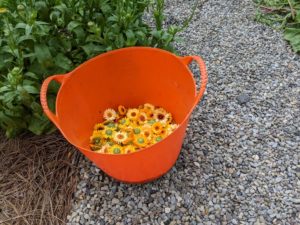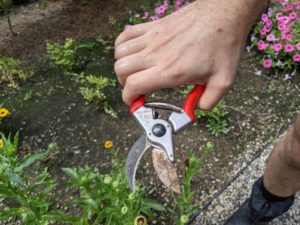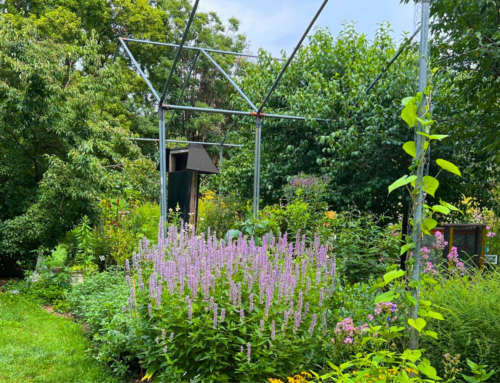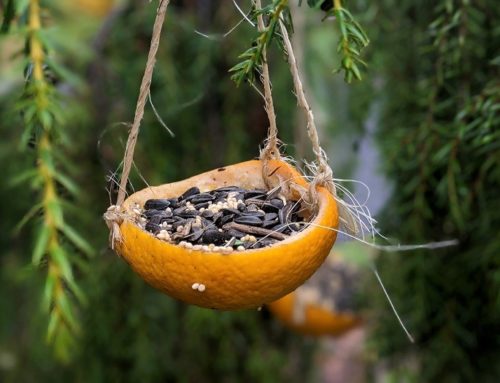With the holidays right around the corner, let’s look at the giving and receiving of tools. Getting a garden or landscaping tool as a gift is not like getting another scented candle (sorry Yankee), nor a “cute” mug (sorry Hallmark and Snapfish), nor underwear (sorry Fruit of the Loom). Rather, giving or receiving a garden tool recognizes the other’s passion and a desire to make their life easier. Don’t we all need to be seen and to have simpler lives?
The right garden tool for a specific task in the garden can make all the difference in the world. With that in mind, let’s get some suggestions from the Volunteers at Tyler Arboretum regarding some of their favorite and most useful garden tools.
- Soil Knife – is the one tool that does it all – weeding, digging, cutting, dividing, scraping, measuring, prying, and is even able to open the cap of your cool soda or beer – just kidding, not a feature yet!
- Hori Hori/Garden Knife – is a slightly curved stainless steel blade with a serrated edge that is perfect for transplanting, weeding, dividing plants, opening plastic bags, cutting twine, and more. Some people use this tool in place of a hand trowel, as you can easily use it to transplant seedlings and dig holes for planting. Some models have measurements engraved in the blade, making it easier to measure depth when planting seeds.
- Spading Fork – looks like a pitchfork (which I love to use for mulching) and is meant for turning soil. It works well for hard-packed soil. It can also be used for mixing fresh compost into established beds.
- Weed Wrench – sometimes called “Grampa Weeder,” is used to remove problem trees and shrubs (woody plants) and for those who desire to remove large invasives from their property.
- Stirrup or Scuffle, Scotts, Weed Hoe – helps loosen the top layer (about an inch below the surface) of soil in a garden or flowerbed, which snags weeds at their roots, allowing the entire plant to come out of the dirt. Different sizes will enable you to weed between rows.
- Spade – the perfect tool for tight spaces in your garden. Its blade tends to be narrower and more square than that of a shovel. This tool ideal for digging holes for plants and bushes, especially in established gardens where you don’t want to disturb existing plants. Its similarity to the shovel allows you to use it for transporting and general digging in your yard or garden bed.
- Pruners – good for harvesting herbs, fruits, and vegetables and cutting thick stems and small branches.
- Loppers – for pruning trees and shrubs with branches one or two inches maximum thickness, trimming hedges, and removing diseased branches.
- Pruning Saw – is for branches too thick for loppers and yet a bit of overkill for a chainsaw. Some say having pruning shears and a pruning saw are enough; thus, skip the loppers.
- Electric Hedge Trimmer – I used to have a negative attitude about this tool, yet as I am older, pruning for an extended period with loppers takes more time and energy than I sometimes have.
- Garden Tub/trug – are ideal for hauling, harvesting, weeding, mixing soil, storing,, and much more. You may want to have several in various sizes. Plus, the a colorful one will brighten up your garden.
- Tarp – makes it easy to clean up any household project such as potting, gathering leaves and pine needles, or other yard waste, to name just a few uses.
- Collapsible Yard/Leaf Bag – allows for easy collection and carrying of leaves and yard waste,, and it can be folded up and stored without taking up too much space.
- Garden Gloves – protect your hands and wrists from scratches, scrapes, and splinters, and help to avoid rashes and allergic reactions to plants. Eczema-prone gardeners need a nice set of gloves to protect their hands. Atlas nitrile gloves are durable, breathable, easy-to-clean in the washing machine. To extend their life, do not put them in the dryer. Garden gloves made for cold weather gardening can make early spring and fall gardening much more enjoyable. If you listen to music, podcasts, or take photos in your garden, a touchscreen garden glove would be helpful.
- Garden Journal, Planner, Logbook – is a place to keep records, observations, plant information, and anything related to your garden. It is a unique history of what grows where and when. It can help document successes and challenges and well as track garden yield.
One of the volunteers loves working with the chipper. It made me smile and think that if you want to give a really big gift, this one would meet the size and price tag criteria.
Another volunteer said his best gardening tool was his wife. I admit I laughed aloud and heartily too. Given his response, I am forced to withhold this blog from my spouse!
Now, if you want to give the gift of time this year, then you could give a homemade gift certificate that says you are going to clean all your loved one’s garden tools, or if you get garden tools as a gift this season, you will want to keep them looking like new.
With all that in mind, let’s get to how to keep your garden tools clean and as effective as the day you got them.
Regularly cleaning and oiling your garden tools will prevent rust, keep them sharper, and allow the handles to stay strong.
- Start by giving your tools a good scrubbing to remove mud and grit from the blades and handles. Use paint thinner to remove pitch or sap. Let them dry overnight.
- Remove rust by using steel wool or a wire brush that has accumulated on the metal part. You can brew strong black tea for hand tools, soak the tools for a few hours, and then wipe off the rust with a rag.
- Smooth worn wood handles with a medium (80-120 grit) sandpaper to remove splinters and deteriorated finish. You can also use sandpaper to remove any remaining rust from surfaces and crevices and to polish the metal lightly.
- When finished, wipe down the tools to remove any wood or metal sanding dust.
- Use a metal file to sharpen the tool edges. Don’t file too hard. Smooth out nicks, remove burrs and give the tool a nice clean edge. For some cutting tools like hedge clippers and axes, you’ll need a sharpening stone lubricated with oil for a fine edge.
- Use a clean rag, apply lubricating (boiled linseed, tung, motor, lamp, cooking) oil to the wooden handles and the metal blades; the oil will help prevent rust and condition the wood to keep it from absorbing water and prevent cracking. After the handle has dried, apply a second coat of oil to the wood, if needed. Tools with fiberglass or composite handles will only need a good cleaning.
Note: Wear eye protection when working with anything that will produce metal fragments or particles of dust or debris.
Remember, this season, and always,, that “the excellence of a gift lies in its appropriateness rather than in its value.” – Charles Dudley Warner. I can assure you from both the answers of Tyler volunteers and my own experience, the giver of an appropriate gift is always thought of when the gift is put to work in the service of the receiver’s passion.










